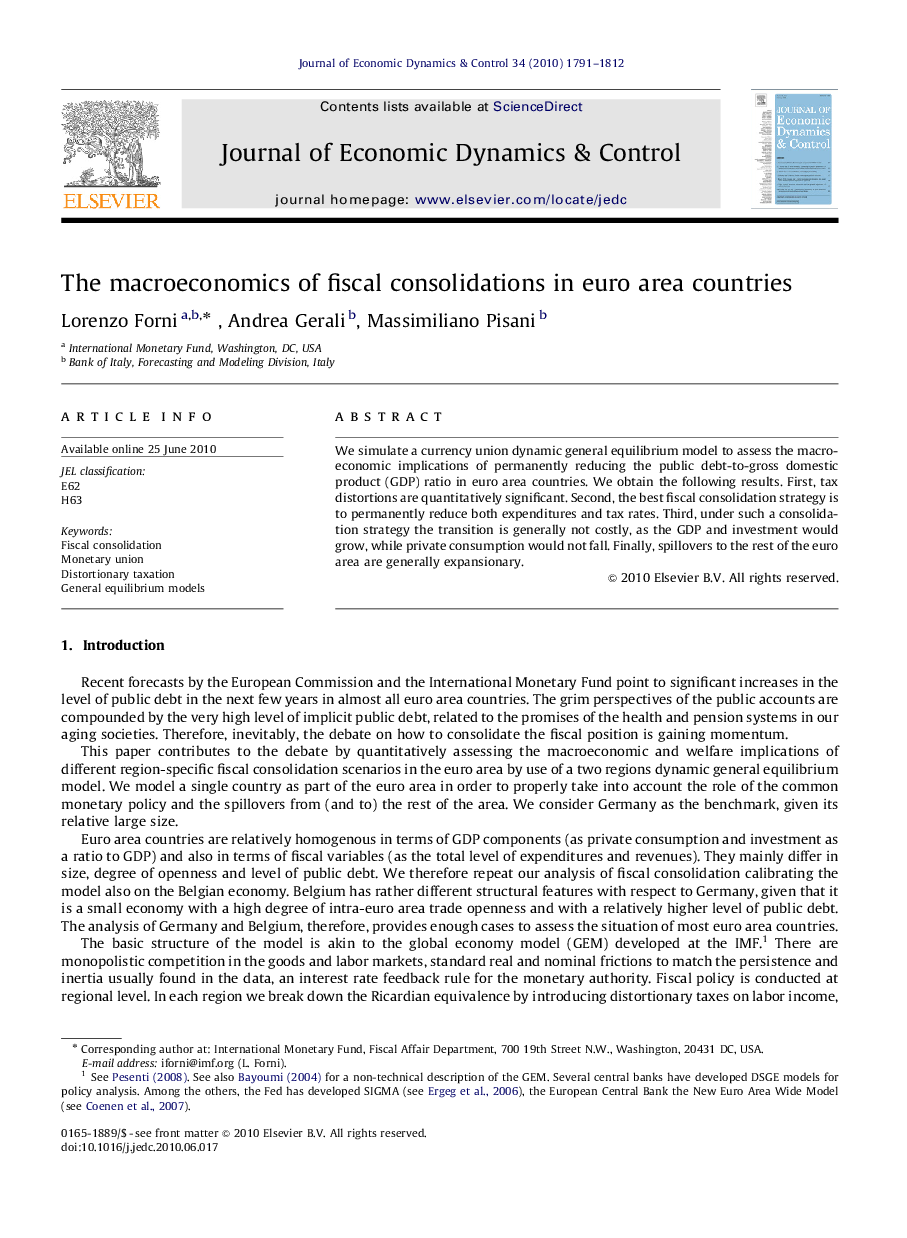| Article ID | Journal | Published Year | Pages | File Type |
|---|---|---|---|---|
| 5099306 | Journal of Economic Dynamics and Control | 2010 | 22 Pages |
Abstract
We simulate a currency union dynamic general equilibrium model to assess the macroeconomic implications of permanently reducing the public debt-to-gross domestic product (GDP) ratio in euro area countries. We obtain the following results. First, tax distortions are quantitatively significant. Second, the best fiscal consolidation strategy is to permanently reduce both expenditures and tax rates. Third, under such a consolidation strategy the transition is generally not costly, as the GDP and investment would grow, while private consumption would not fall. Finally, spillovers to the rest of the euro area are generally expansionary.
Related Topics
Physical Sciences and Engineering
Mathematics
Control and Optimization
Authors
Lorenzo Forni, Andrea Gerali, Massimiliano Pisani,
